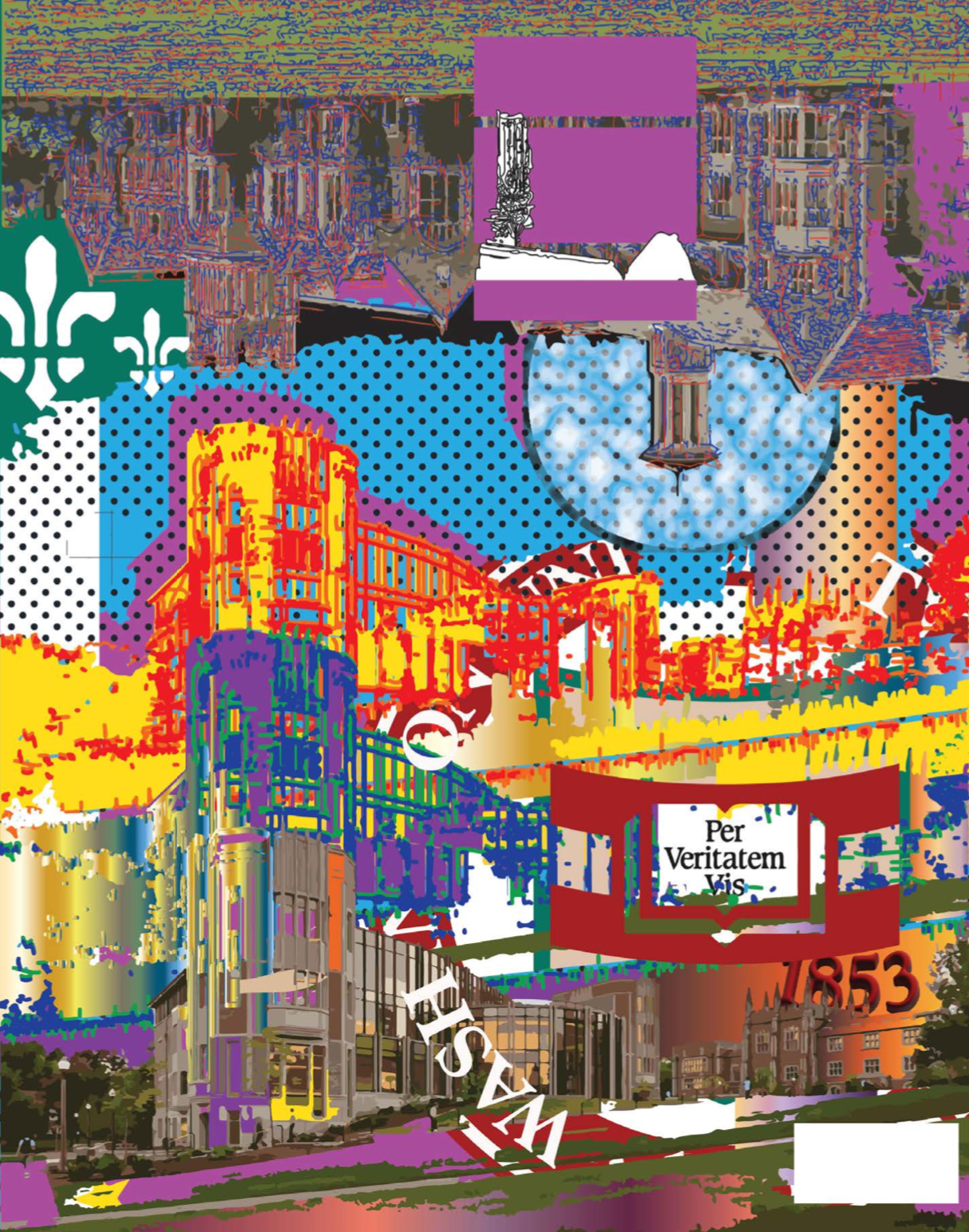Artwork by Ben Eskenazi

The age-old question: of St. Louis, or in St. Louis? To shed light on this question, this article will examine the origin of WashU’s best known buildings. Who are they named for? And, more importantly, how did their namesakes make their donation money?
The Mallinckrodt Center was renamed in 1976 after a generous donation from the Mallinckrodt Chemical Corporation (MCC) in St. Louis. The MCC was founded by the Mallinckrodt family in the late 19th century and expanded the good old-fashioned way, by exposing their employees to dangerous levels of radiation and suppressing labor unions. During World War II, MCC signed a contract with the U.S. War Department to become the only supplier of uranium products for the Manhattan Project, a top-secret government mission to create the atomic bombs that went on to take 214,000 innocent lives in Japan. After WWII, the MCC turned to opiates and quickly became a leader in the marketing of codeine. Today, the MCC is still a lead supplier of narcotic analgesics and recently settled in court for $1.7 billion in response to more than 3,000 lawsuits accusing the MCC of “fueling the opioid epidemic through deceptive mar- keting, including by playing down the risks of addiction and abuse,” according to Reuters.
The Mildred Lane Kemper Museum, while founded only in 1960, dates back to 1881 with the establishment of Washington University. Its namesake and founder, Mildred Lane Kemper, is a Kansas City native but spent much of her time in St. Louis with her family. The wife of the chairman emeritus of Commerce Bancshares, Kemper spent her time traveling and donating to colleges and universities to pave the way for her children to make a name for themselves. Her granddaughter, Ellie Kemper, became a successful actress with a current net worth of $9 million. Ellie grew up as part of the St. Louis elite, enjoying the perks of nepotism and a $30,000 per year private school education. At age 19, she was crowned “Queen of Love and Beauty” at the exclusionary and racially segregated Veiled Prophet Ball by a man in white robes resembling that of a Klansmen. Today, the Veiled Prophet still holds its exclusive annual ball, and the Kemper family continues to hold prominent positions within the St. Louis community. Ellie Kemper’s father and Veiled Prophet affiliate, David W. Kemper, currently serves as the Vice Executive Chair of the Washington University Board of Trustees.
The Olin Business School was renamed after a hefty donation from business autocrat John Olin in 1988. Olin made his name during World War II when Olin Industries signed a contract with the U.S. and allied forces to supply ammunition. Touring the country as a millionaire in 1969, Olin witnessed a march at Cornell University in which Black students held firearms in protest of threats from white fraternity brothers. While the students called for safety and civil rights, Olin was horrified that his alma mater was showing signs of radicalization. Thus, he set his sights on suppressing the progressive ideology being spread across college campuses, a movement he deemed “disgraceful.” His work included founding right-wing college newspapers and forums, facilitating conserva- tive think-tanks and seminars, and funding the education of white students who openly agreed with his beliefs. Today, his legacy lives on at Olin Business School, where students are funneled into employment at a number of oligarchic and genocidal companies such as Boeing, Raytheon, and Lockheed Martin.
Brookings Hall, named for Robert Somers Brookings, was established in 1902 and funded in part by serving as the administrative office for the World’s Fair. The location was perfect; in fact, Brookings stands less than half a mile away from the site where 1,100 Filipino natives were put on display in human zoos and forced to eat dogs for entertainment. The hall was officially named after Brookings in 1928 during his tenure as Chancellor. At the same time, Brookings Institution in Washington D.C. was established and began the U.S. during WWII. Since its inception, Brookings in D.C. has been cited by Congress innumerable times regarding foreign policy, often in favor of war and colonialism. Following this tradition, Brookings Hall was lit in red, white, and blue in celebration of hosting the 2016 presidential debate between Donald Trump and Hillary Clinton.
For word-count purposes, this article will focus on the founder and colonial mind behind WashU’s name, rather than its namesake. William Greenleaf Eliot, minister, race theorist, and anti-abolitionist, founded WashU in 1853 to expand higher education in the west. At the university’s inauguration, Eliot says that he and the board of trustees decided on Washington because the university was “a university for the people, whom [George] Washington served.” In addition to naming the university, Eliot is the namesake of several campus buildings, and even the student acapella group, the Greenleafs, until recently. The Greenleafs, now known as the Evergreens, made the name change in response to the article WashU’s founder was not an abolitionist: Who was William Greenleaf Eliot? Eliot owned at least two slaves and was a well-known supporter of the Back-to-Africa movement. WashU’s official websites still fail to reflect this research.
Washington University’s history, while not always pleasant, is essential to our experience in St. Louis as students. Far too often, WashU students separate themselves from the greater St. Louis community. As the 2022 academic year comes to an end, I urge you to recognize the privilege that comes with attending an institution built on the backs of others and their suffering. Lastly, do not rely on those who profit from such an establishment to accurately represent its past.